Abstract
Unger, Leon (University of Illinois, Urbana), and R. D. DeMoss. Metabolism of a proline analogue, l-thiazolidine-4-carboxylic acid, by Escherichia coli. J. Bacteriol. 91:1564–1569. 1966.—Resting cells of Escherichia coli K-12, pregrown in a proline- and thioproline-free medium, oxidize the proline analogue, l-thiazolidine-4-carboxylic acid (l-thioproline), without a lag with the consumption of 1 atom of oxygen per mole of thioproline. The organism also oxidizes cysteine and formaldehyde, the chemical precursors of thioproline. The total oxygen consumed is the same whether the substrate is thioproline, cysteine, formaldehyde, or an equimolar mixture of cysteine and formaldehyde. The results suggest that neither cysteine nor formaldehyde are free intermediates in the oxidative pathway. Thioproline is available as a metabolic carbon source for the synthesis of the ribonucleic acid bases, guanine and uracil.
Full text
PDF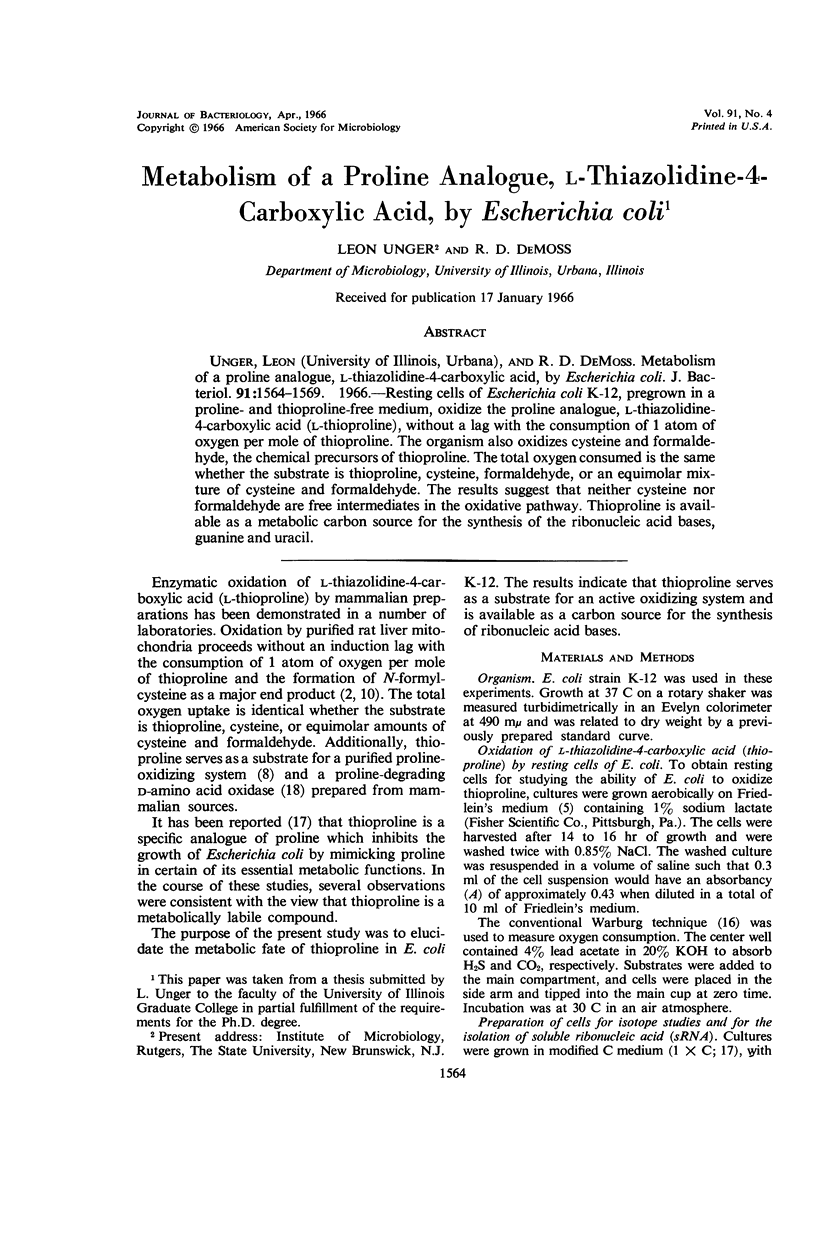
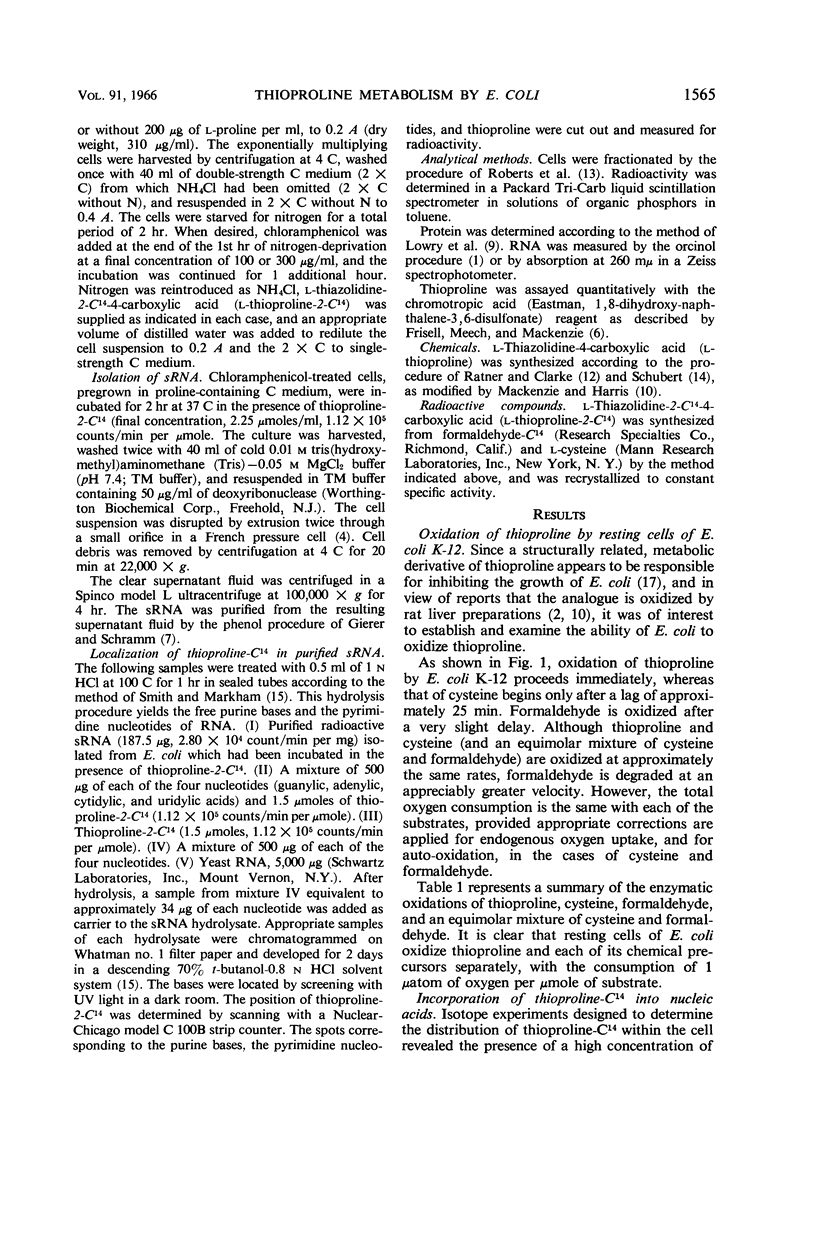
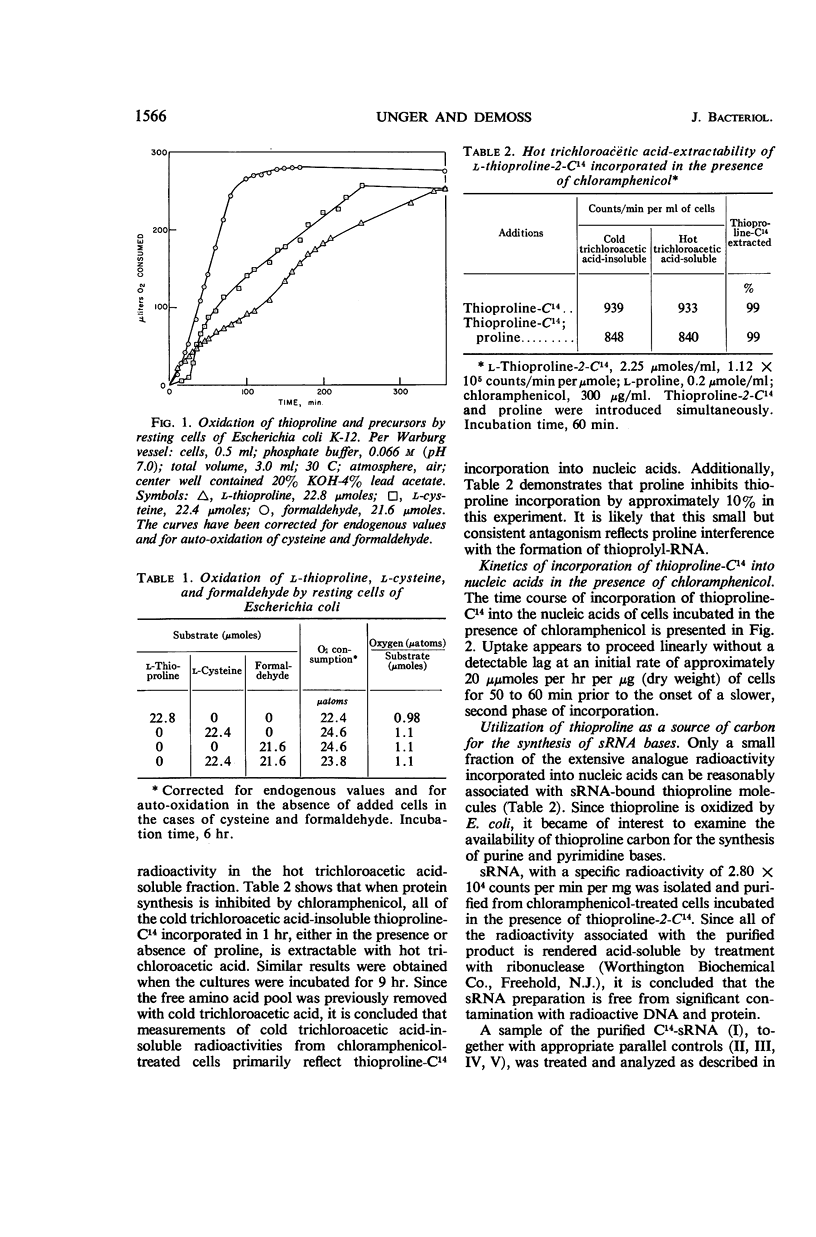
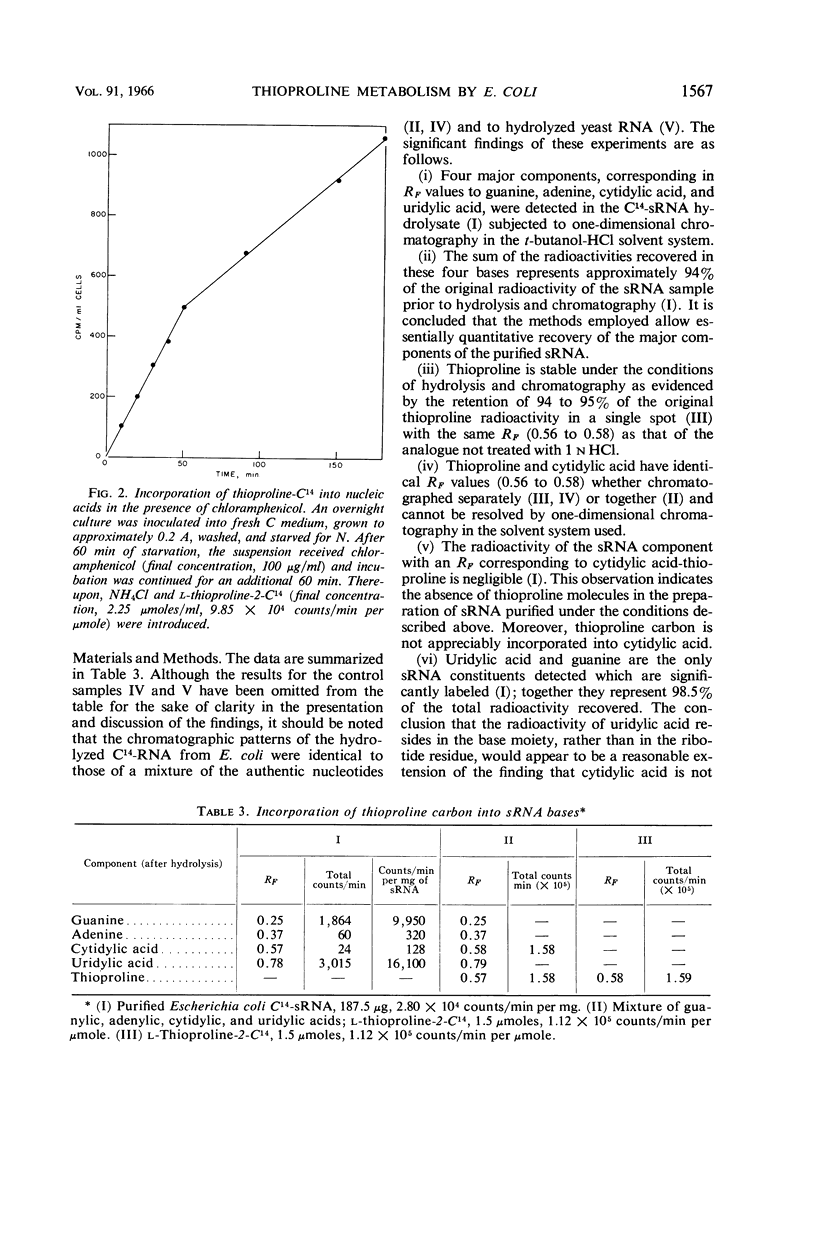
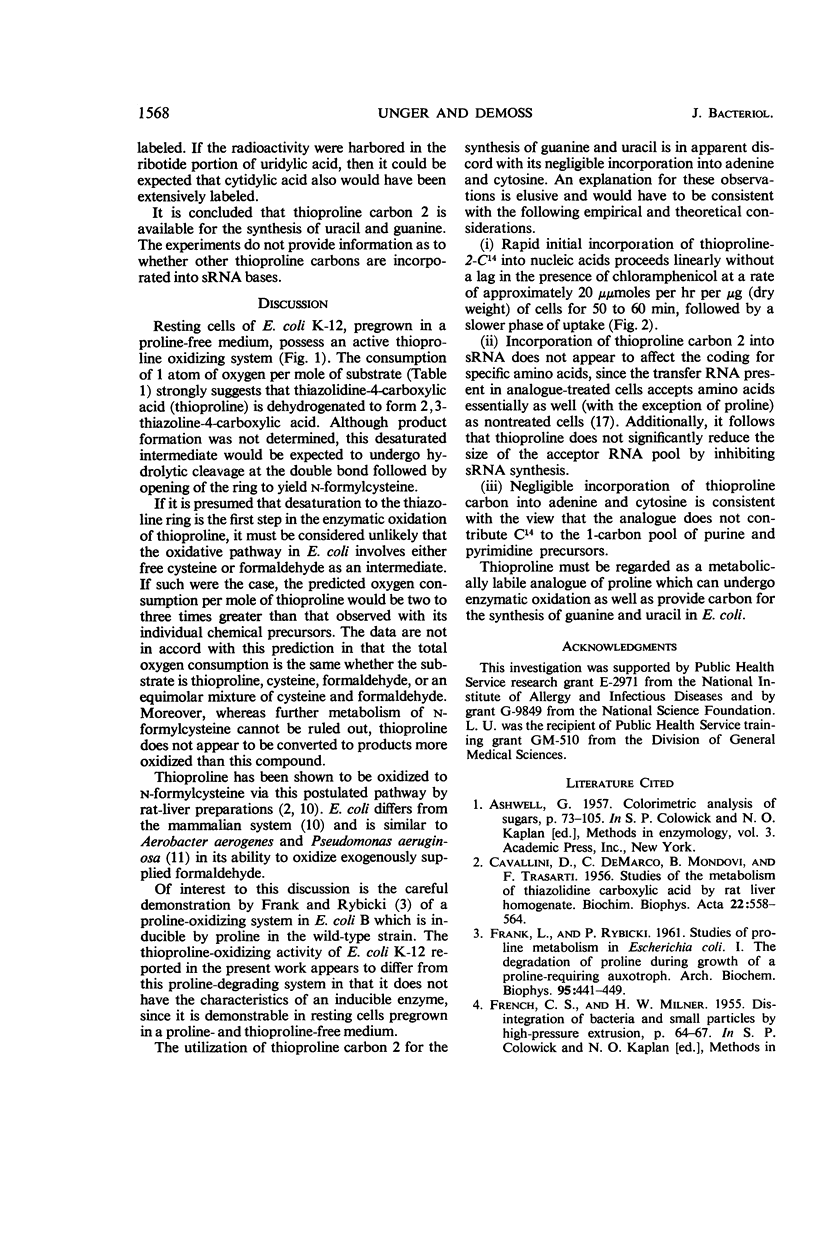
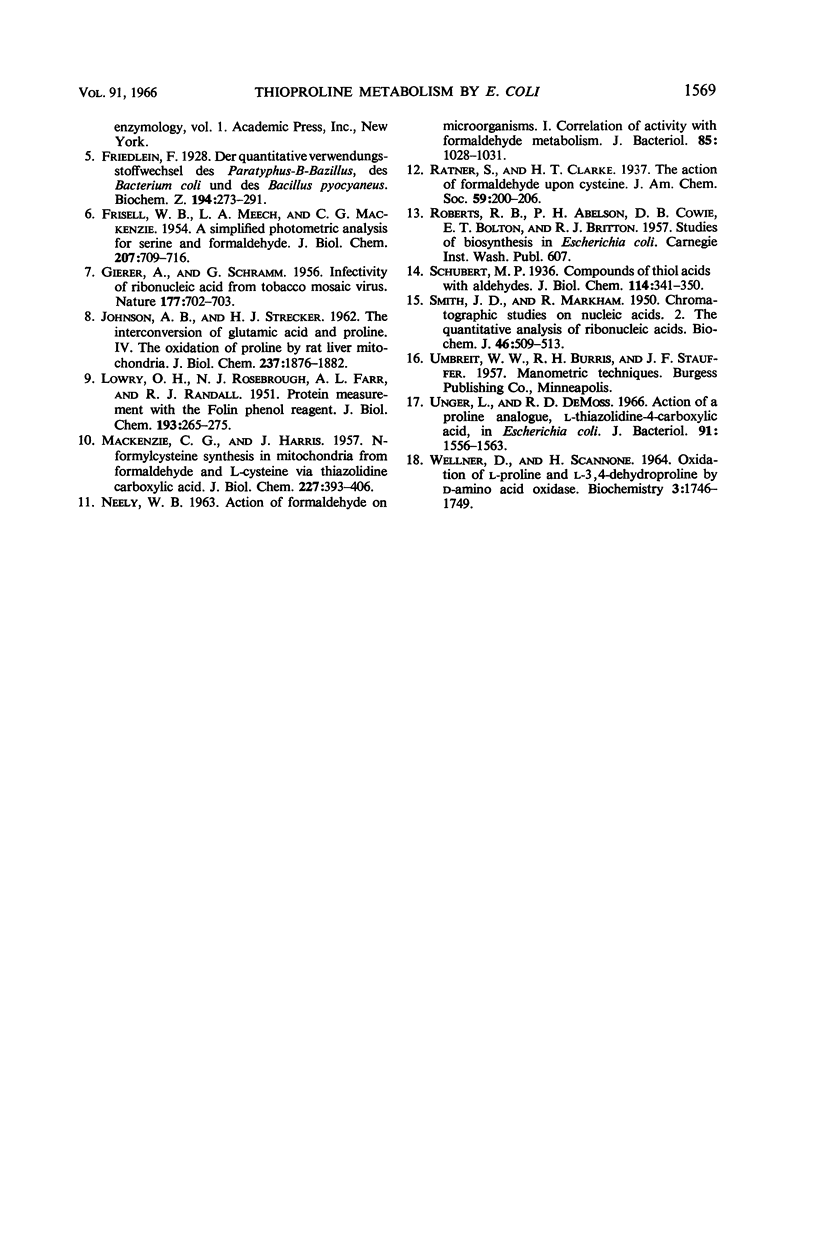
Selected References
These references are in PubMed. This may not be the complete list of references from this article.
- CAVALLINI D., DE MARCO C., MONDOVI B., TRASARTI F. Studies of the metabolism of thiazolidine carboxylic acid by rat liver homogenate. Biochim Biophys Acta. 1956 Dec;22(3):558–564. doi: 10.1016/0006-3002(56)90068-3. [DOI] [PubMed] [Google Scholar]
- FRANK L., RYBICKI P. Studies of proline metabolism in Escherichia coli. I. The degradation of proline during growth of a proline-requiring auxotroph. Arch Biochem Biophys. 1961 Dec;95:441–449. doi: 10.1016/0003-9861(61)90174-6. [DOI] [PubMed] [Google Scholar]
- FRISELL W. R., MEECH L. A., MACKENZIE C. G. A simplified photometric analysis for serine and formaldehyde. J Biol Chem. 1954 Apr;207(2):709–716. [PubMed] [Google Scholar]
- GIERER A., SCHRAMM G. Infectivity of ribonucleic acid from tobacco mosaic virus. Nature. 1956 Apr 14;177(4511):702–703. doi: 10.1038/177702a0. [DOI] [PubMed] [Google Scholar]
- JOHNSON A. B., STRECKER H. J. The interconversion of glutamic acid and proline. IV. The oxidation of proline by rat liver mitochondria. J Biol Chem. 1962 Jun;237:1876–1882. [PubMed] [Google Scholar]
- LOWRY O. H., ROSEBROUGH N. J., FARR A. L., RANDALL R. J. Protein measurement with the Folin phenol reagent. J Biol Chem. 1951 Nov;193(1):265–275. [PubMed] [Google Scholar]
- MACKENZIE C. G., HARRIS J. N-formylcysteine synthesis in mitochondria from formaldehyde and L-cysteine via thiazolidinecarboxylic acid. J Biol Chem. 1957 Jul;227(1):393–406. [PubMed] [Google Scholar]
- NEELY W. B. ACTION OF FORMALDEHYDE ON MICROORGANISMS. I. CORRELATION OF ACTIVITY WITH FORMALDEHYDE METABOLISM. J Bacteriol. 1963 May;85:1028–1031. doi: 10.1128/jb.85.5.1028-1031.1963. [DOI] [PMC free article] [PubMed] [Google Scholar]
- SMITH J. D., MARKHAM R. Chromatographic studies on nucleic acids; the quantitative analysis of ribonucleic acids. Biochem J. 1950 May;46(5):509–513. doi: 10.1042/bj0460509. [DOI] [PMC free article] [PubMed] [Google Scholar]
- Unger L., DeMoss R. D. Action of a proline analogue, l-thiazolidine-4-carboxylic acid, in Escherichia coli. J Bacteriol. 1966 Apr;91(4):1556–1563. doi: 10.1128/jb.91.4.1556-1563.1966. [DOI] [PMC free article] [PubMed] [Google Scholar]
- WELLNER D., SCANNONE H. OXIDATION OF L-PROLINE AND L-3,4-DEHYDROPROLINE BY D-AMINO ACID OXIDASE. Biochemistry. 1964 Nov;3:1746–1749. doi: 10.1021/bi00899a028. [DOI] [PubMed] [Google Scholar]


